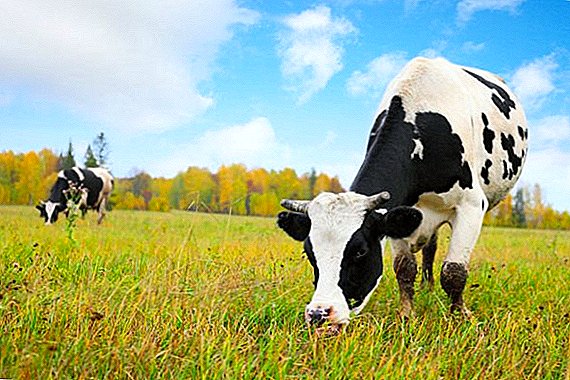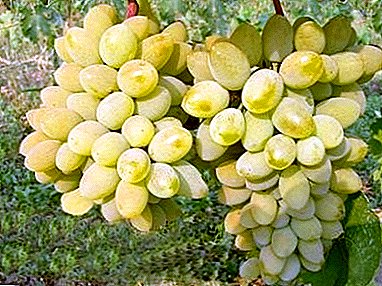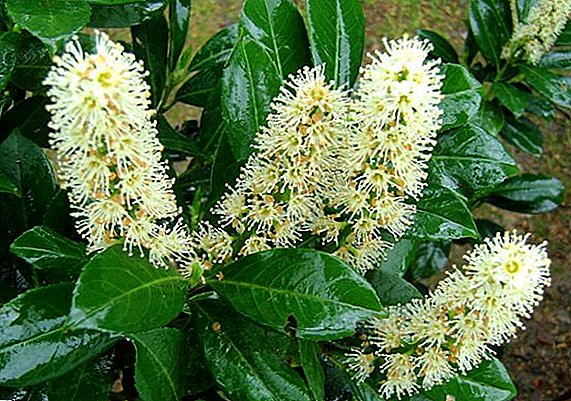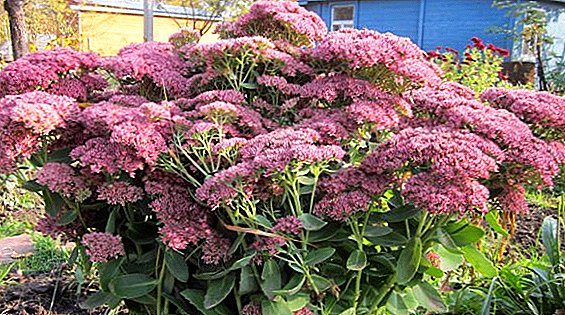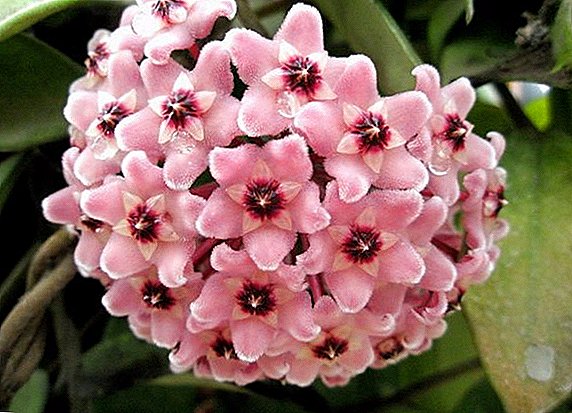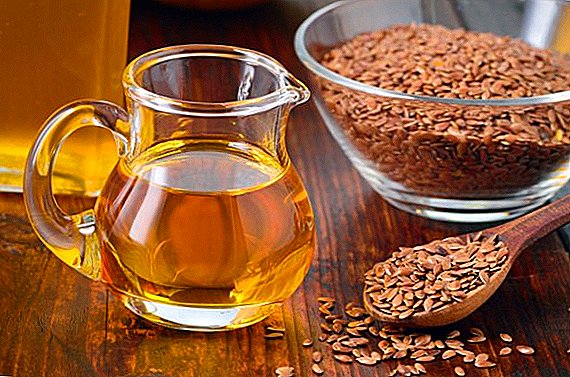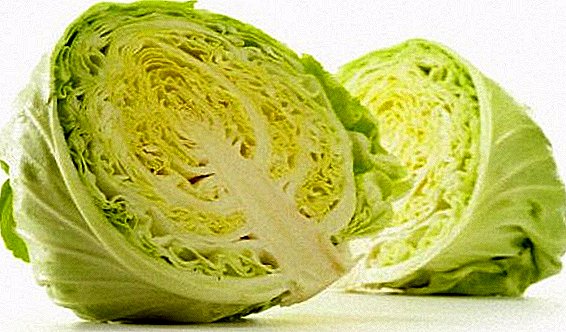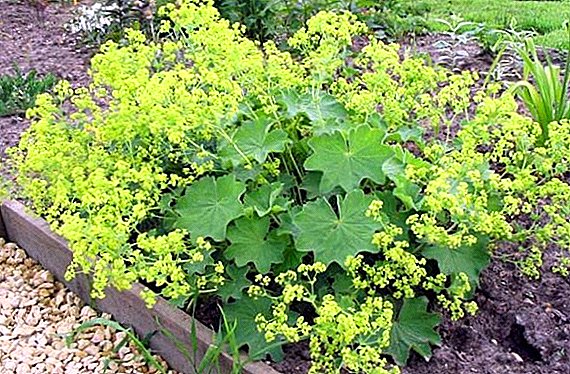 In the world of gardening and landscape design, you need to constantly monitor trends.
In the world of gardening and landscape design, you need to constantly monitor trends.
The freshest of them is the addition of a soft cuff plantings to your plots, the description, methods of reproduction and the basics of caring for which you can read in this article.
Biological description
Cuff soft - grassy perennial. A distinctive feature of this variety of the Pink family from its wild relatives is larger foliage and flowering, which forms a massive shrub.  Cuff blooms all summer. Tiny buds in greenish-yellow inflorescences located on long processes give a special aesthetics. Gradually, these flowering shoots bend closer to the soil.
Cuff blooms all summer. Tiny buds in greenish-yellow inflorescences located on long processes give a special aesthetics. Gradually, these flowering shoots bend closer to the soil.
Did you know? The cuff got its name due to the similarity of its folded, corrugated foliage with lace and sleeved sleeves on dresses, shirts, and blouses - cuffs. Considering that the word "cuff" itself appeared no more than three centuries ago, the popular name of the plant is not older.
Use in landscape design
In addition to the soft cuff, other types of this plant are used in landscape design, but because of their tiny size, they are not as popular as our main character.
Designers especially like soft because of their ability to form for a short time luxurious vegetation, long flowering and an abundance of flowers. You can plant in places not indulge in sunlight, big rabatkah, curbs, on the paths or at the edges of water bodies.  Effectively, it looks like a backdrop for other plantations, which contrast stand out among the green thickets. Incredibly beautiful bloom next to the cuff rose, peony and delphinium. It is very colorfully combined with cornflower or carnation.
Effectively, it looks like a backdrop for other plantations, which contrast stand out among the green thickets. Incredibly beautiful bloom next to the cuff rose, peony and delphinium. It is very colorfully combined with cornflower or carnation.
You can also accentuate the theme of the garden, dropping it near the resting places and along the edges of the alleys and paths. The cuff will easily fill the empty space during the pause in the flowering of other plants.
Perennial herbaceous plants include rudbeckia, nemesia, helihrizum, phlox, crested, geyher, alissum, gravilat.
Choosing a place
The seat is better to choose not under the trees, and it should have a neutral loose soil with a high concentration of humus.
Important! In the preparatory process, the main task is to prevent air from penetrating into the soil, constantly moisturizing it, but also not to allow excess liquid on the surface.Minimal care for this plant is required if it is planted in an organically rich, loamy soil with good natural light and constant moisture. Preliminary introduction of humus or compost will also contribute to better growth.

Planting seedlings on the site
Planting of seedlings can be carried out during the whole season, but preferably in the warmer months - this will allow the plant to grow well in the soil and will not fear for its fate during the winter cold.
Seedlings should be planted at intervals of 30 cm. This is due to the intensive growth of the cuff and difficult transplantation. Transfer of grown bushes is a very problematic idea.
A small root system with multiple developed lateral roots tightly envelops the soil, and sometimes grows under the alleys and occupies the space of its neighbors.
Care Tips
All care consists of timely watering and cutting of overgrown sprouts. The plant is not afraid of weeds, but also itself has a very rapid growth rate, therefore, requires special attention. Winter cuff is not terrible, but mulching bushes with peat does not hurt. 
Watering
The frequency of irrigation is determined by weather conditions - in case of heat, abundant and frequent watering is necessary. But without waterlogging - it can destroy the plant.
Fertilization
Fertilized in the spring with the help of humus will be enough soil so as not to introduce additional feedings. At the same time, fertile moist soil, which is not necessary to loosen additionally, will ensure good growth and flowering of the cuff.
Pruning
Pruning is necessary to ensure the continued attractiveness of the plant. In early spring, it is carried out for sanitary purposes, cleaning the bushes and removing everything dried over the winter. To fear to cut off the excess is not necessary - the bush grows very rapidly.
Important! Growth control is due to the aggressiveness of the cuff, which can eclipse and absorb its neighbors.To bush re-bloom in the fall, you need to prune immediately after the flowering period.

Preparing for the winter
If in the autumn to mulch bushes with peat, then the winter will pass for the plant very easily. Fallen leaves also fit for this. In the middle latitudes, you can not cut the cuff for the winter, as the dead leaves themselves will cover the bush from future frosts.
Did you know? In English, the soft cuff is popularly called "lady's mantle", which translates as "lady's mantle."
Diseases and pests
Diseases are very rare for this plant. If you violate the conditions of cultivation, powdery mildew may occur on the leaves. If you plant a cuff under a tree, you can expect the appearance of black rust. Foliage can be damaged by snails and slugs.
Mold on the trunks indicates a lack of lighting and excessive moisture. It is necessary to transplant diseased plants, processing the fungicide several times and trimming the damaged parts. 
Breeding methods
Soft cuff can be propagated in two ways - by dividing the bush and sowing seeds. How to do this is described below.
Growing from seed
Seed propagation is the most popular way. To get young plants, it is necessary to plant the seeds in the previously prepared soil in the tanks and transfer to germinate in a cool room until germination.
Important! The best time to land the cuff is early spring with insufficiently heated soil.When the seedlings grow, it is necessary to plant in separate containers to form a complete root system. Normal growth and development is impossible without quality drainage.
It is recommended to propagate with the help of seeds in autumn time, which guarantees a successful planting on permanent places in the new season and excellent plant growth.
Dividing bush
You can multiply the cuff by dividing the bush throughout the season.  It is necessary to begin with digging out a bush completely, which is very inconvenient and time consuming because of the intertwined root system.
It is necessary to begin with digging out a bush completely, which is very inconvenient and time consuming because of the intertwined root system.
Next, a neat section is made into smaller parts from the socket to the rhizome and disembarkation in the prepared peat-rich places. The interval should be at least 30 cm. Timely watering of seedlings is very important.
The soft cuff is a very peculiar plant that can play an important role in the design of any garden.


